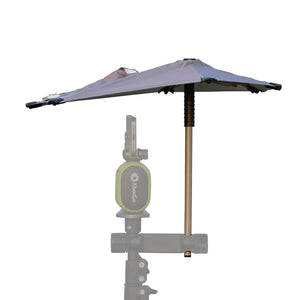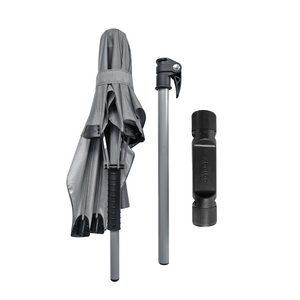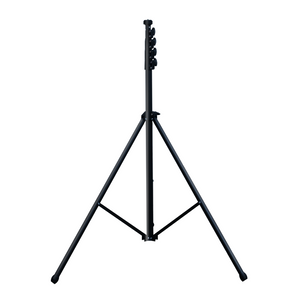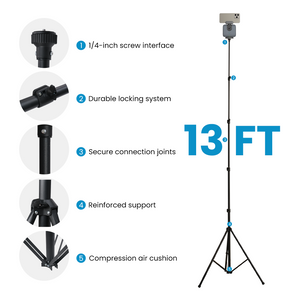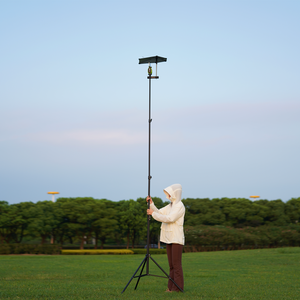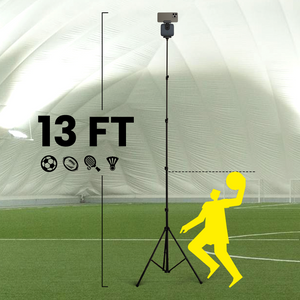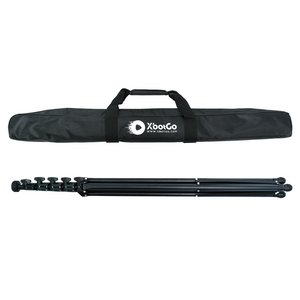XbotGo Chameleon AI Sports Camera
What Is a Double Double in Basketball? Easy Guide & Tips
In today's fast-paced NBA, double-doubles have become more frequent than ever before. During the 2014-15 season alone, players recorded an astounding 1,899 double-doubles across 1,230 games. But beyond the raw statistics lies a deeper story about basketball excellence, versatility, and the evolution of the game itself.
Whether you're a young player working toward your first double-double, a coach teaching fundamental concepts, or a parent wanting to understand your child's development, understanding double-doubles means grasping what truly makes a complete basketball player.
This guide goes beyond simple definitions to show you how to achieve, evaluate, and appreciate these statistical milestones in the context of winning basketball.
What Makes a Double-Double?
The Five Statistical Categories That Count
A double-double occurs when a player reaches double digits (10 or more) in two of basketball's five major statistical categories within a single game. These categories are:
- Points: The most straightforward statistic, accumulated through field goals and free throws
- Rebounds: Both offensive and defensive, showing control of the boards
- Assists: Passes that directly lead to made baskets by teammates
- Steals: Defensive plays that take possession from the opponent
- Blocks: Defensive plays that prevent shot attempts from reaching the basket
The most common double-double combinations are points with rebounds (typically achieved by forwards and centers) and points with assists (usually accomplished by guards). Achieving double digits in steals or blocks alongside another category is exceptionally rare, making these combinations particularly impressive.
Common Misconceptions & Clarifications
One of the most frequent questions from players and fans alike is whether turnovers count toward a double-double. The answer is definitively no. As one player humorously noted, turnovers might count "if you wanna bust a guy's balls," but for official record-keeping, only positive statistical contributions count. Double-doubles celebrate achievement, not mistakes.
Another misconception involves the difficulty of achieving different types of double-doubles. Many assume all double-doubles are created equal, but as we'll explore, the value and difficulty vary significantly based on the categories involved and the player's position.
Why Double-Doubles Indicate Basketball Excellence
Double-doubles represent more than just statistical accumulation—they demonstrate a player's ability to impact the game in multiple ways. A player who consistently achieves double-doubles shows versatility, endurance, and the basketball IQ to contribute beyond their primary role. This multifaceted contribution often correlates with winning basketball, as it indicates a player who can adapt to what the team needs in any given moment.
The Strategic Value: Why Different Double-Doubles Win Games
Points + Assists: The Offensive Multiplier Effect
The points-assists double-double carries unique strategic value. As one basketball analyst calculated, "10 points and 10 assists contribute to at least 30 points, and up to 40 points if the assists are all threes." This multiplier effect means a player with this combination directly influences a significant portion of their team's scoring.
Guards who master this combination become offensive engines, controlling tempo and creating opportunities for teammates while maintaining their own scoring threat. This dual capability forces defenses into difficult decisions: close out on the playmaker and risk leaving shooters open, or stay home on shooters and allow penetration.
Points + Rebounds: Controlling Both Ends of the Court
The points-rebounds double-double, while contributing "only" the scorer's 10 points directly, provides crucial value through possession control. As one coach wisely noted, "A rebound ends the other team's possession, more importantly it stops the other team from scoring. You can't get 10 points or 10 assists on your offensive end until you secure the rebound."
This combination demonstrates a player's ability to finish possessions on both ends—scoring on offense and securing rebounds to prevent second-chance opportunities for opponents. Players who consistently achieve this double-double type often anchor their team's interior presence.
Rare Combinations: Steals and Blocks Impact
Double-doubles involving steals or blocks represent elite defensive impact. These combinations are exceptionally rare because reaching 10 steals or blocks in a single game requires extraordinary defensive awareness, timing, and opportunity. When achieved, they often correlate with dominant defensive performances that can single-handedly swing games.
Position-Specific Pathways to Double-Double Success
Guards: Mastering the Assist-Scoring Balance
For guards, the path to consistent double-doubles typically runs through the points-assists combination. The key lies in maintaining aggressive scoring while keeping teammates engaged. One effective strategy involves establishing a scoring threat early in the game, which forces defenses to commit additional attention, thereby creating passing opportunities.
Guards should focus on reading defensive reactions to their drives. When defenders collapse or hedge on screens, quick decision-making can lead to easy assists. The mathematical approach is straightforward: if quarters are eight minutes long, you need just one made shot per quarter (assuming some three-pointers or free throws) and 2-3 assists per quarter to reach double-double territory.
Big Men: Dominating the Paint and Boards
Centers and power forwards have a more direct path through points and rebounds. The key insight from experienced players: "If the shot comes from one side, get to the opposite side. There's a high percentage chance the ball will hit the rim and bounce off because momentum is taking it that way."
Positioning becomes crucial. Establishing deep post position serves dual purposes—creating high-percentage scoring opportunities and securing prime rebounding real estate. Big men should aim for 2.5 rebounds per quarter, which becomes achievable through proper box-out technique and anticipation.
Versatile Players: Multiple Statistical Pathways
Modern basketball's positionless nature has created opportunities for versatile players to achieve double-doubles through various combinations. Wings who can handle the ball might alternate between points-rebounds games when playing small-ball four and points-assists games when initiating offense. This adaptability makes them particularly valuable in today's NBA.
The Mathematics of Achievement: Breaking Down the Process
Quarter-by-Quarter Strategy for Each Statistic
Understanding the mathematical breakdown makes double-doubles feel more achievable. Consider this quarter-by-quarter approach:
For Scoring: One made shot per quarter gets you halfway there. Mix in some three-pointers or trips to the free-throw line, and 10 points becomes remarkably attainable. The key is consistency rather than explosive scoring bursts.
For Rebounds: At 2.5 rebounds per quarter, you'll reach 10 by game's end. This breaks down to roughly one offensive and one-and-a-half defensive rebounds per quarter—a realistic target for active players.
For Assists: Averaging 2-3 assists per quarter requires constant court awareness. Look for cutters, spot-up shooters, and rolling big men. Remember, you're dependent on teammates making shots, so find the hot hand.
Positioning and Anticipation Techniques
Success in achieving double-doubles often comes down to positioning before the action happens. For rebounding, this means establishing position before shots go up. For assists, it means recognizing defensive rotations before they fully develop. For steals, it's about understanding passing lanes and opponent tendencies.
The concept of "help defense" can lead to both steals and assists. When you force opponents into difficult situations through defensive pressure, you create turnover opportunities. Similarly, when teammates help on defense, they often leave their assignments, creating passing opportunities on offense.
Mental Approach: Organic vs. Forced Statistics
Perhaps the most crucial element is maintaining basketball integrity while pursuing statistical achievements. The difference between organic and forced double-doubles often determines whether individual success translates to team victories. As one analyst observed about players who chase statistics: "She's not playing to win, she's genuinely not playing to win... she stopped passing the ball... stopped playing defense."
The key is letting double-doubles happen within the flow of team basketball. Focus on making the right play—whether that's taking an open shot, making the extra pass, or crashing the boards—and the statistics will follow naturally.
Modern Game Evolution: Why Double-Doubles Are More Common Now
Increased Pace and Possession Changes
Today's NBA operates at a significantly higher pace than previous decades. More possessions per game means more opportunities for statistical accumulation. When teams are getting 100+ possessions per game compared to 90 in previous eras, there are simply more chances to score, rebound, and assist.
This pace increase particularly benefits guards seeking assists and wings looking for rebounds in transition. The mathematical reality is simple: more possessions equal more statistical opportunities.
Positionless Basketball and Versatility Rewards
The traditional positional boundaries have blurred dramatically. Today's game features point guards who crash the boards like forwards and centers who initiate offense like guards. This evolution has made double-doubles more accessible across all positions.
Teams now run "five-out" offenses where all players can shoot from the perimeter, creating long rebounds that guards can secure. Similarly, big men handling the ball in space can accumulate assists in ways that were impossible in previous eras of strict positional play.
Rule Changes and Their Statistical Impact
Modern rule changes favoring offensive freedom have contributed to increased scoring and assist opportunities. The elimination of hand-checking, the emphasis on freedom of movement, and the spacing created by the three-point revolution all contribute to an environment where double-doubles are more achievable.
Defensive rule changes have also impacted rebounding distribution. With fewer players camping in the paint due to defensive three-second violations, rebounds are more evenly distributed among all five players on the court.
Conclusion
Double-doubles are more than just stats—they show a player’s versatility and impact on the game. Whether you’re a player aiming for your first double-double or a fan who wants to understand basketball excellence, focus on overall development and team play. With the right strategies, practice, and mindset, double-doubles will naturally become a part of your basketball journey.
XbotGo Chameleon AI Sports Camera
Capture every moment with AI-powered tracking. Perfect for coaches, parents, and athletes who want seamless footage without manual filming.







 Soccer
Soccer Basketball
Basketball Ice Hockey
Ice Hockey Rugby
Rugby










